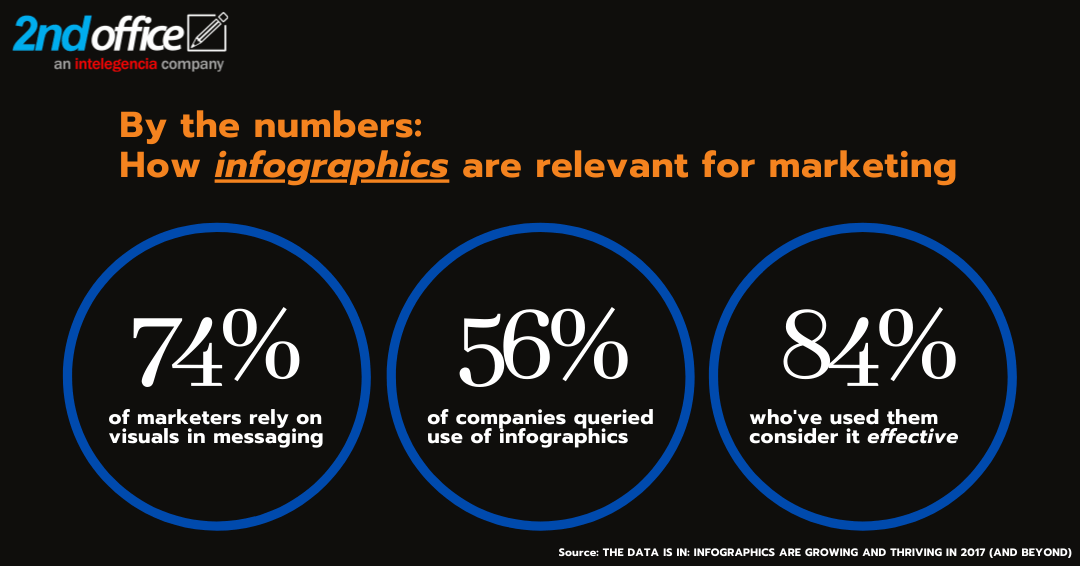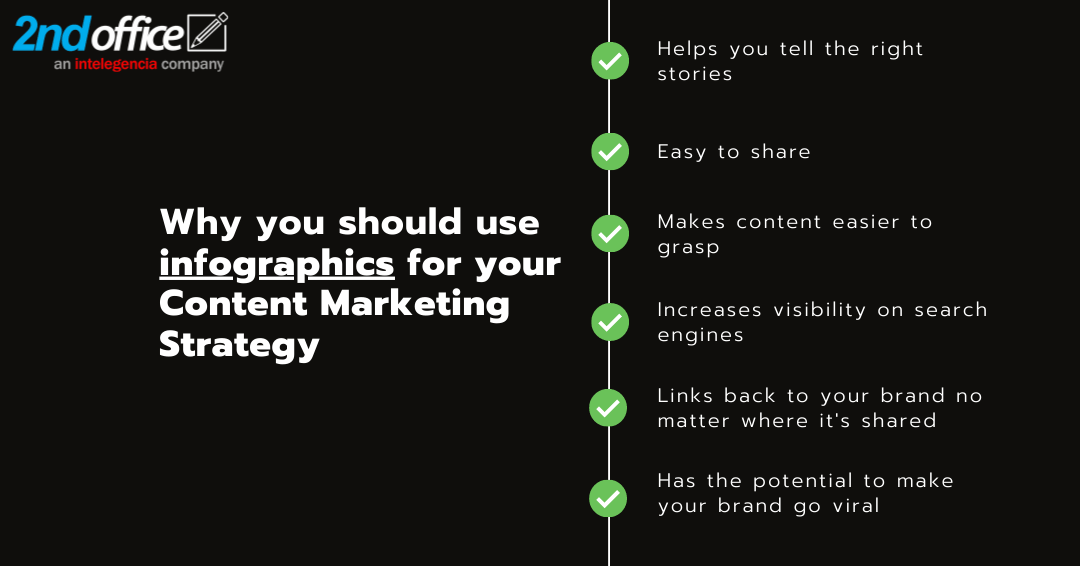If you could have a bird’s eye view of all the people using their mobile phones to access and share information, you would be amazed. The number of data produced every minute is enough to fill every device’s memory capacity – from Facebook videos to tweets. Considering the condensed environment in the online world, anyone would struggle to stand out without the right strategy in place.
When users are scrolling through their feeds, most brand posts typically go unnoticed. In-your-face advertisements are generally disregarded. No one wants to see a pitch in between posts of friends and family.
So how can brands effectively grab the user’s attention without coming off as salesy? Through attention-grabbing infographics.
What are infographics?
Infographics are visual representations of information, whether it’s to show history, tips, or even a strategy. It combines both text and visual elements to make it easier for readers to understand and summarize information that would otherwise be challenging to digest.
There’s no single way to design an infographic. Marketers use a ton of different types, such as flowcharts and timelines, to make graphics presentable. It all depends on what data you’re presenting to the audience.
Infographic marketing for your business
Everything we see online needs to be digested and understood within a few seconds. Otherwise, users will move on to the next post on their queue. Infographics are an excellent way to present your story and offer a visual experience to your leads.
If you’re still on the grey area about whether or not you should invest in publishing more visual content such as infographics, here are ten benefits of infographics:
10 Benefits of Infographics
1. Infographics can help you tell the right stories.
Infographics are an excellent way to display easily noticeable information. If you want to share your company details like your logo, website, and your contact details, you can be creative about it on your visuals. Your traffic can increase by at least 12 per cent with the right layout and graphics. When It comes to storytelling, one-page infographics are a guaranteed yet discreet way of sharing the good stories about your brand.
Additionally, displaying an infographic with your content can also help potential leads reach out to you easier, as opposed to looking for your ‘Contact Us’ page.
2. One page infographics are easy to share.
If you want to reach people outside of your current following, infographics are also a great tool for the purpose. Because you’re sharing information and making it enjoyable with great design, users will be more inclined to share your infographics to their network. On Twitter alone, 80 per cent of users tend to retweet posts with images compared to text-only tweets. Imagine the reach potential when you share your infographics across all your social platforms.
Beyond social media, infographics are also easily embeddable. Users can use the embed code on their blogs or websites, and that will always be linked back to your page.
3. Infographics make your content easier to grasp.
Product features and information aren’t always fun to read. Without proper illustrations, you run the risk of miscommunication with customers who might have different expectations based on their understanding of your product details. At worst, potential buyers might even get discouraged if they can’t clearly understand your product details.
Infographics are an excellent way to display your products, services, and even relevant data. It’s 60,000 times faster to process for the human brain compared to text-heavy content. And when users can quickly get what you’re trying to say, then you can be sure that you’re communicating (and advertising) in the most efficient way possible.
4. Search engines love infographics.
One reason why brands don’t pay much attention to one-page infographics is because of the common assumption that images can only help with social media. In reality, visuals hold a high value for both your audience and search engines.
When asked, 60 per cent of consumers say they are more likely to contact a business when it has an image that shows up on search engine results pages (SERPs). Algorithms like Google acknowledge this preference and place visual content at a high priority spot.
5. Your infographics are your own.
Unlike text that’s easy to copy and paste, infographics are harder to steal and repost without credit. Logos and other watermarks on your visuals will keep other brands from claiming it as their own.
Additionally, it will always be associated with your brand every time it pops up on the search page. Because of this, there’s a potential for increased traffic and visibility on the online space.
6. Infographics can help you go viral.
Images shape a user’s first impression. Before they open your article or even read your caption, you have a few seconds first to catch their attention with your visuals. In content marketing, it’s proven that posts with images get 94 per cent more views than a regular post.
Because it’s so attractive to users, there’s a higher chance of your content going viral if you accompany it with rich infographics. Virality is a dream for many marketers and has kickstarted the growth of many brands.



